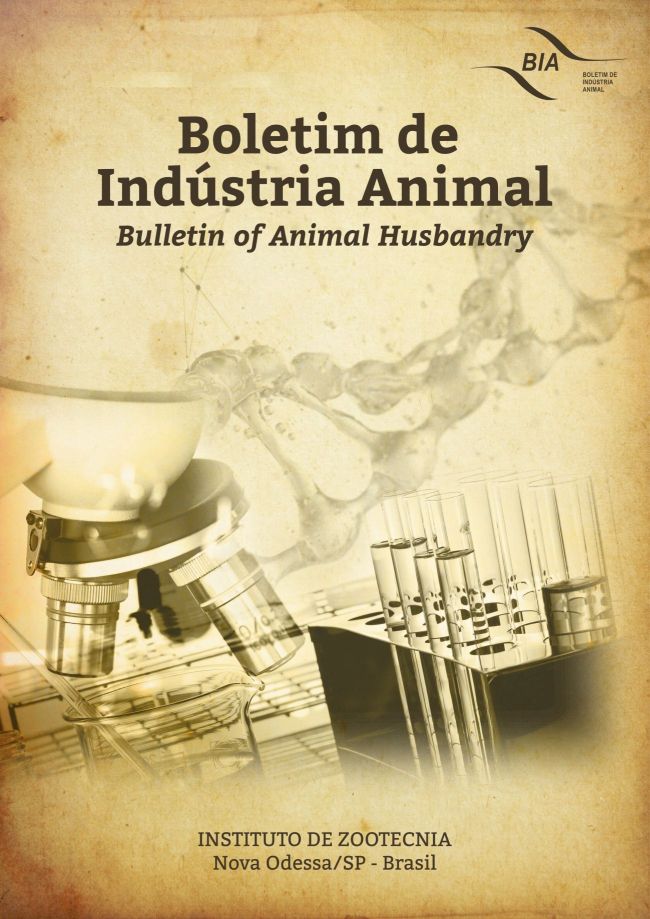Prevalence of mastitis and characterization of milking management of dairy cows in northwestern Sao Paulo state
DOI:
https://doi.org/10.17523/bia.2021.v78.e1497Palavras-chave:
Flowchart, mastitis, milking hygiene, preventionResumo
The lack of application of good practices in milking management can lead to the occurrence of one of the main diseases affecting the Brazilian dairy herd€”mastitis. This study was developed to examine the prevalence of clinical and subclinical mastitis as well as to evaluate the contribution of milking management to this prevalence, thereby providing bases for a better control of mastitis in dairy herds at Fernandopolis region, Sao Paulo State, Brazil The study involved nine farms with 223 lactating cows. All cows were evaluated by the strip-cup test and the California Mastitis Test (CMT). In addition, the employees' conduct during milking; the physical structure of the farm; animal handling; and dry cow treatment were observed. Results were tabulated and evaluated for the development of a flowchart of good practices. Subclinical mastitis was detected in 30.5% of the farms; 66.7% perform mechanical milking and 89% have a cooling tank, but 77.7% do not sanitize the equipment after milking. Pre- and post-dipping were not performed by 89%; 66.6% do not adopt a milking line; and none of the farms realized mastitis detection tests. In conclusion, subclinical mastitis is present in the evaluated herds. By observing the management adopted on each farm, the main critical points were found to be related to failures in handling and in milking and equipment hygiene. The implementation of a flowchart of good milking practices is extremely important for the producer, since the main method to avert and control infection is prevention.
Downloads
Downloads
Publicado
Edição
Seção
Licença
Os autores não serão remunerados pela publicação de trabalhos, pois devem abrir mão de seus direitos autorais em favor deste periódico. Por outro lado, os autores ficam autorizados a publicar seus artigos, simultaneamente, em repositórios da instituição de sua origem, desde que citada a fonte da publicação original seja Boletim de Indústria Animal. A revista se reserva o direito de efetuar, nos originais, alterações de ordem normativa, ortográfica e gramatical, com vistas a manter o padrão culto da língua e a credibilidade do veículo. Respeitará, no entanto, o estilo de escrever dos autores. Alterações, correções ou sugestões de ordem conceitual serão encaminhadas aos autores, quando necessário. Nesses casos, os artigos, depois de adequados, deverão ser submetidos a nova apreciação. As opiniões emitidas pelos autores dos artigos são de sua exclusiva responsabilidade. Todo o conteúdo deste periódico, exceto onde está identificado, está licenciado sob a Licença Creative Commons Attribution (CC-BY-NC). A condição BY implica que os licenciados podem copiar, distribuir, exibir e executar a obra e fazer trabalhos derivados com base em que só se dão o autor ou licenciante os créditos na forma especificada por estes. A cláusula NC significa que os licenciados podem copiar, distribuir, exibir e executar a obra e fazer trabalhos derivados com base apenas para fins não comerciais.













